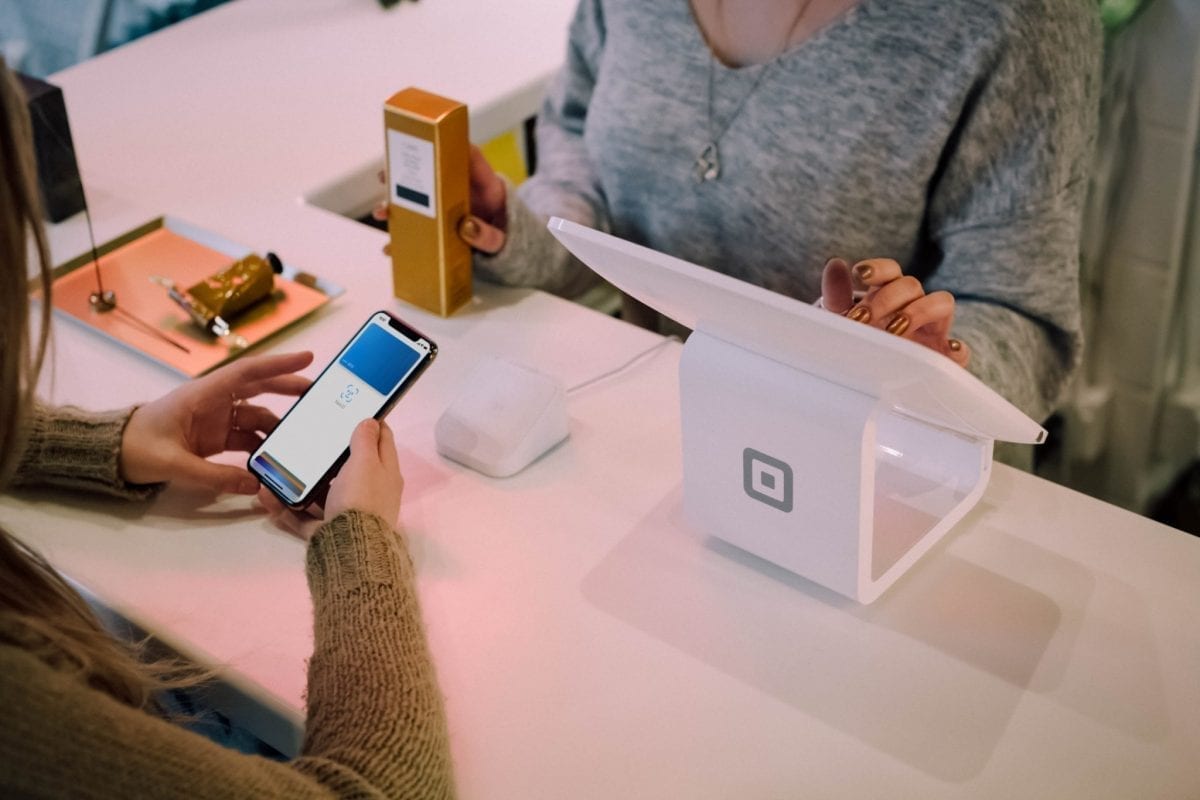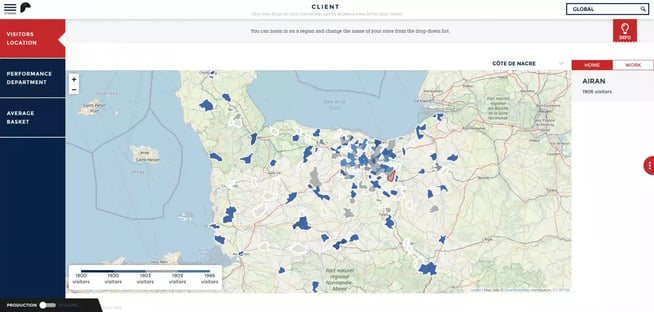
How retail analytics can help brick and mortar stores to win back their market share?
Data analysis has an increasing impact on the economic model of all industries. Retail trade is probably the industry that has been most influenced by these practices.
This particularity is evidenced by the success of pure-playing retailers such as Amazon or Alibaba. These companies were able to benefit from obtaining a large amount of information from their users: customer typology, research history, average purchase budget…
Pure player retailers understood early that they needed to understand their users to ensure the successful marketing of their products. Through personalized referral systems or early shipping models, they are able to attract consumer attention through hyper-personalization strategies.
While we all agree that physical stores do not have access to the same level of data as online stores, Brick-and-Mortar businesses can catch up if they develop a data-driven culture.
According to a recent report from Cisco, the implementation of an in-store data strategy could add a staggering $61 billion of value to traditional retailers worldwide in a year!
These stores indeed enjoy an advantage envied by pure-player retailers: physical availability. Basing their data strategies on in-store retail analytics allows Brick and Mortars to create personalized customer experiences that are more enjoyable than consumers can get online, in Go stores without a cashier, or in Amazon Go stores.
Why Data Storytelling is particularly adapted to brick-and-mortar stores needs
Data Storytelling refers to the ability to tell a story with data customized to the audience. To build an image, a marketing director does not have the same reporting needs as an operational manager of digital campaigns. Retail analytics reports provide access to and reporting of data that is specifically tailored to the needs of a department.
The use of a data storytelling tool is a real added value for traditional retailers. Retail analytics provides a holistic understanding of what consumers want at each stage of their customer journey. This allows Brick and Mortar stores to solve one of their main pain: creating value from extremely disparate data sources.
How? These solutions collect real-time data from all available sources (retail stores, online store websites, Internet applications and various social channels such as Facebook or Instagram). The data is cleaned, analyzed and then delivered to all the stakeholders who need it. An accurate predictive and prescriptive analysis is then performed and sent to multiple stakeholders via a data visualization dashboard.
The 5 ultimate retail analytics trends to follow in order to implement data-driven strategies
1. The use of retail analytics increases consumer knowledge
As a customer-focused industry, retailers must be able to anticipate and respond to purchaser’s demands.
Every time a customer makes a purchase, he or she gives the store a wealth of information (buying habits, brand preferences, loyalty points). The implementation of data analysis tools allows retailers to examine these multiple data sources to learn more about their customers.
This trend allows traditional retailers to improve the quality of the customer experience through improved operational efficiency. For example, Starbucks collects data on customer preferences to send them personalized ads and coupon offers on specific beverages.
Thanks to data narration software, you can easily measure the effectiveness of this type of operation. You can intuitively visualize which customer typology responds positively to personalized promotions your marketing teams send them.
2. The increase of customer satisfaction thanks to retail analytics
The implementation of in-store data tracking technologies increases consumer satisfaction. And for good reason, these tools considerably increase employee efficiency.
For example, by accessing the stock data, the seller can immediately inform a customer if the article he is looking for is available (in the store itself or in another nearby store).
Also, a better analysis of the data from the loyalty program helps to increase customer satisfaction. From this information, your marketing team can better customize their offer discounts or gifts on the products that the consumer prefers if he or she goes in-store… This will provide the consumer with a special experience during their visit to the store.
3. Provide product trend analysis based on buyers’ needs
Thanks to a data storytelling solution, traditional retailers can easily identify the most popular and profitable product categories in-store, and then build marketing or merchandising strategies to highlight them.
For example, if you sell a t-shirt with three color options, you can access the template in real time on your dashboard which model has had the most success in terms of sales volume. This allows your teams to readjust stocks or to better value this product thanks to merchandising.
In 2018, H&M began using important data to customize the merchandising assortment of their stores. The company also stated that it aimed to reduce markdowns by using algorithms to analyze data from receipts, returns, and loyalty card data.
4. Explore omnichannel behavior
Research on customer experience in the retail industry indicates that more than 80% of shoppers conduct online searches before making their purchase. This means that the journey really begins before the customer even goes to the store!
The Internet is, therefore, a strategic entry point on which retailers must focus to convince their customers to go to the store. How? By strategically using the data collected during their online purchases, you can ensure that they are shown the products they want and given relevant advice when they are in store.
Thanks to data storytelling solution retailers have access to this homogenize data collected from all channels (retail stores, social channels, emailing campaign). Based on that data you can make special packages, offers and personalized messages to be delivered.
For example, Walmart combines social monitoring to track a product’s reaction and sends personalized messages to targeted customers to encourage them to go to stores to retrieve a discount voucher, a gift, to participate to an event.
5. Build new experience within the store
Several studies support that Brick and Mortars who use digital technologies in their stores tend to outperform their peers. Indeed, gathering and analyzing well-selected data gives retailers a competitive advantage.
The aggregation of data from the performance of physical stores, combined with the habits of online shoppers, can allow retailers to offer new services in stores. For example, Uniqlo has developed a click & collect service in several cities (London, Singapore).
Another example, to encourage customers to visit stores, many sportswear companies such as Nike or Adidas regularly launch limited edition collections in a specific store. Customers are invited via a database (regular customers, raffles via social networks…..): being invited and going to the store is experienced as a privilege.
As we have demonstrated, data strategies allow retailers to rethink the physical environment of their stores to offer more personalized experiences for their consumers. All data are homogenized and cross-referenced, to enable effective operational action to be taken.
Also, employee performance and comfort is increased. Shop managers have access to the right figures and can be more confident in monitoring their sales objectives. Sales assistants can respond to customer requests effectively.
By ensuring customer satisfaction and improving purchasing experience, your clients will continue to go to your stores. You are offering them an experience that pure player retailers cannot provide!



.webp?width=440&name=Capture-d%E2%80%99e%CC%81cran-2019-06-26-a%CC%80-10.47.07%20(1).webp)

